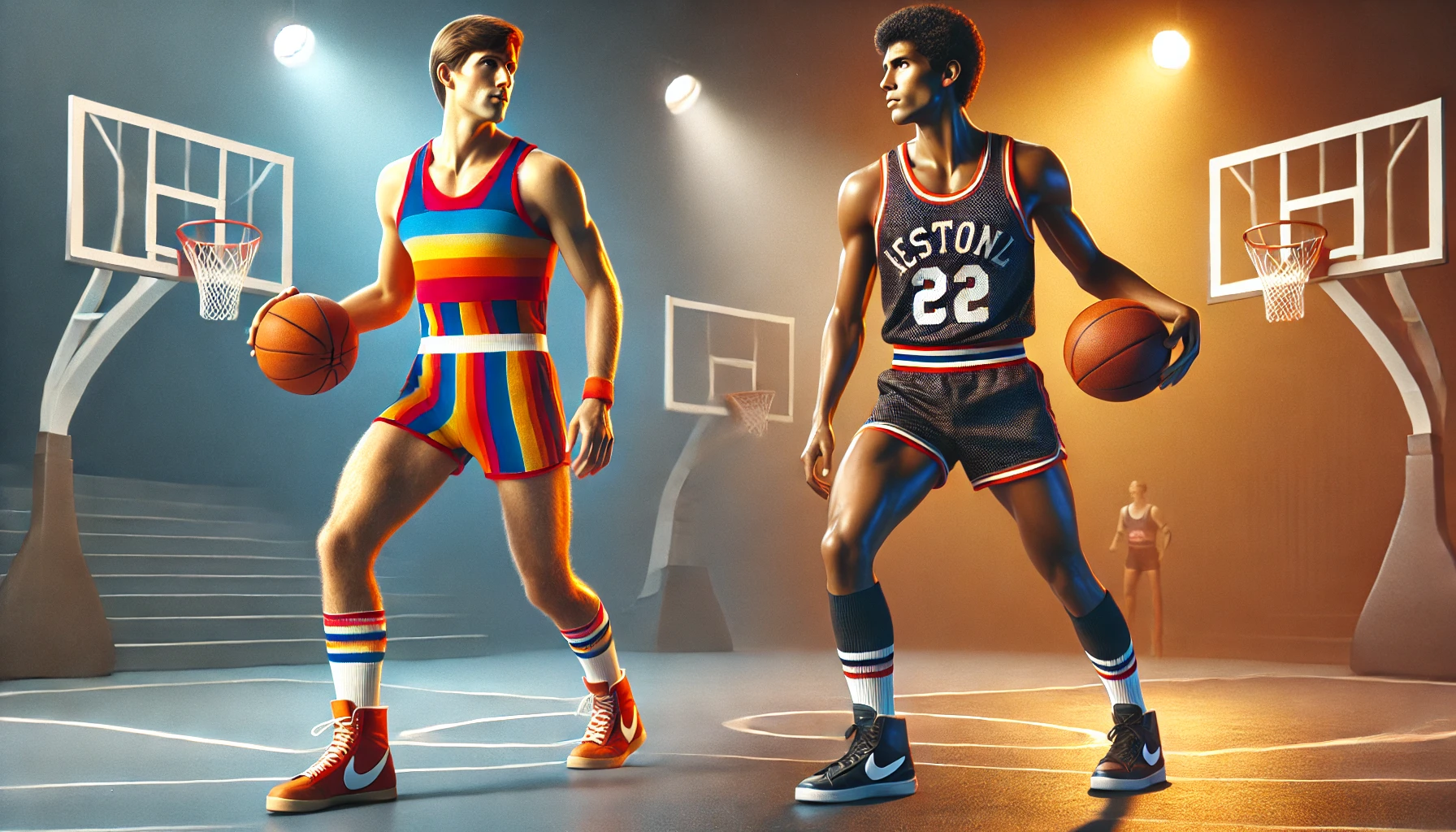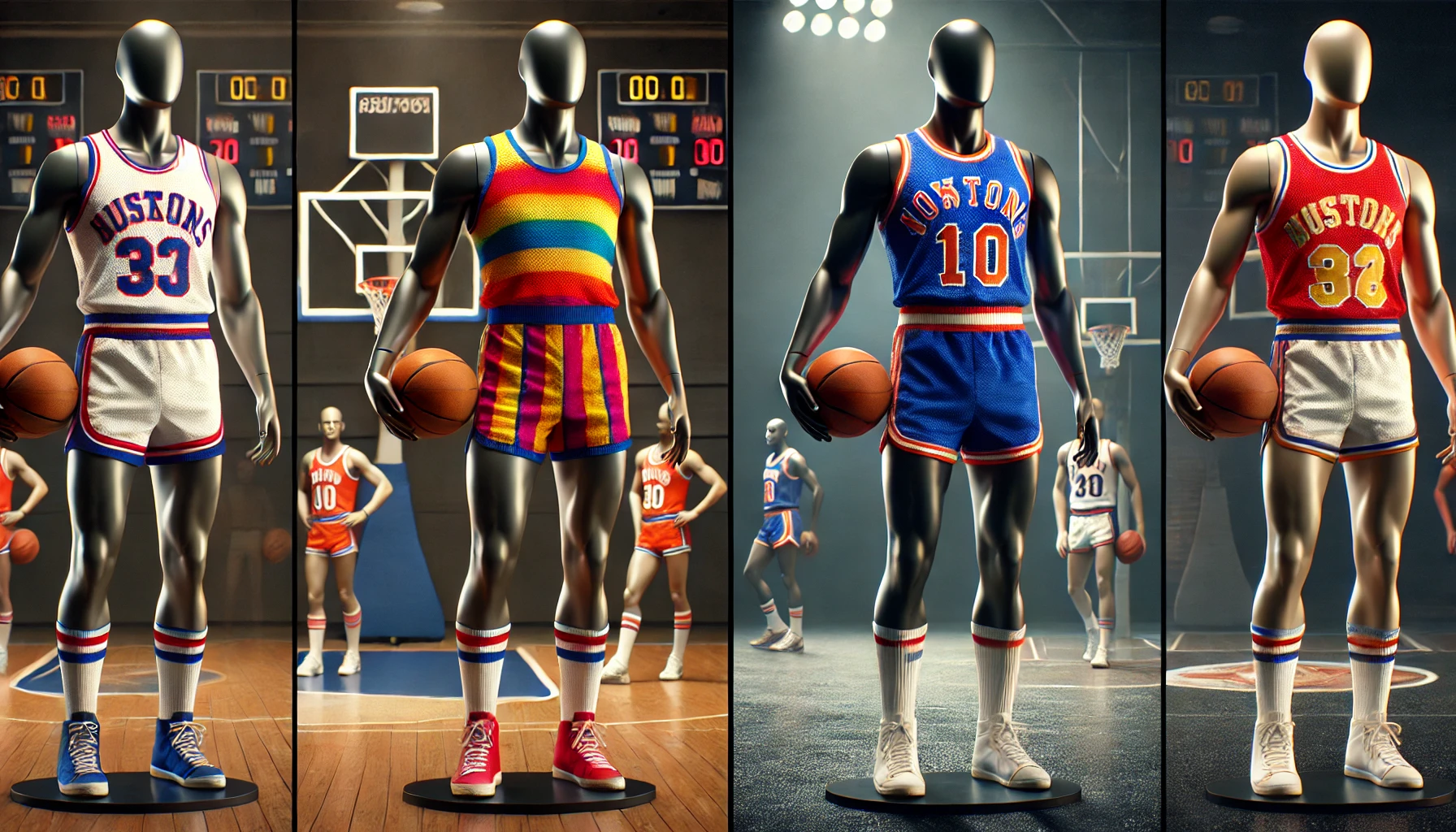Blog
-
Offered Impex
Comparing Basketball Uniforms 1970’s to Modern-Day Designs

Mins To Read
Table of Contents
ToggleBasketball uniforms have come a long way since the 1970s. The decade was marked by bold designs, short shorts, and distinct team colors that captured the spirit of the era. Fast forward to today, and basketball uniforms have evolved to emphasize performance, comfort, and advanced technology. In this article, we will compare basketball uniforms 1970’s to modern-day designs, highlighting the key differences and what has remained constant over the years.
Aesthetics and Style
In the 1970s, basketball uniforms were known for their vibrant colors and unique patterns. Teams like the Los Angeles Lakers and the Boston Celtics donned iconic looks that have since become classics. The uniforms were typically made of heavy fabrics and featured short shorts, which were the style of the time.
Modern-day basketball uniforms, on the other hand, prioritize a sleek and professional appearance. The materials used are lightweight and breathable, enhancing player performance on the court. While the colors and designs are still team-specific, there is a noticeable shift towards minimalism and streamlined aesthetics.
Material and Technology
One of the most significant differences between basketball uniforms 1970’s and today’s designs is the material used. In the 1970s, uniforms were predominantly made of cotton and polyester blends, which were durable but not necessarily comfortable. These materials did not provide the moisture-wicking properties that modern athletes rely on.
Today, basketball uniforms are made from advanced synthetic fabrics that offer moisture-wicking, flexibility, and breathability. Brands like Nike and Adidas incorporate technology that helps regulate body temperature and improve overall comfort. This shift in material has greatly impacted how players perform and feel during games.
Fit and Functionality
The fit of basketball uniforms has also seen a dramatic change from the 1970s to today. The 1970s were characterized by tight-fitting jerseys and extremely short shorts. While these styles were trendy, they were not always practical for the physical demands of the game.
Modern uniforms are designed with functionality in mind. Jerseys are now more fitted but allow for a full range of motion, and shorts have become longer and looser, providing better coverage and comfort. The emphasis on ergonomics ensures that players can move freely and perform at their best.
Cultural Impact
Basketball uniforms 1970’s were a reflection of the cultural and social trends of the time. The flashy designs and bright colors were synonymous with the vibrant, rebellious spirit of the 1970s. These uniforms have left a lasting legacy and are often celebrated in retro collections and throwback games.
In contrast, modern basketball uniforms reflect the contemporary focus on professionalism and brand identity. Teams and sponsors have a significant influence on the design, and the uniforms often feature logos and branding elements that were not present in the 1970s. This shift highlights the commercialization and global reach of basketball today.
Conclusion
Comparing basketball uniforms 1970’s to modern-day designs reveals a fascinating evolution in aesthetics, material, fit, and cultural significance. While the bold styles of the 1970s hold a nostalgic charm, modern uniforms are a testament to advancements in technology and a focus on player performance. Whether you prefer the retro look or the sleek contemporary designs, there is no denying that basketball uniforms have a rich history that continues to evolve.
Newsletter
Subscribe my newsletter to get the latest posts delivered right to your email.
